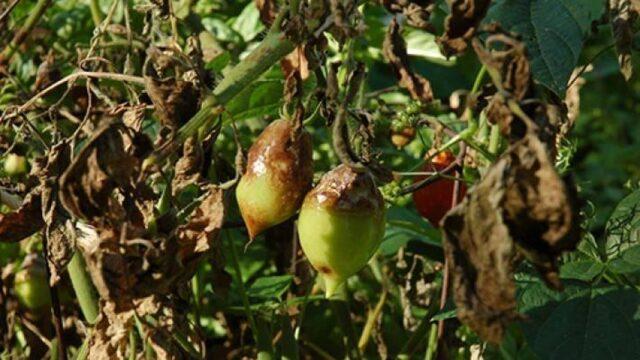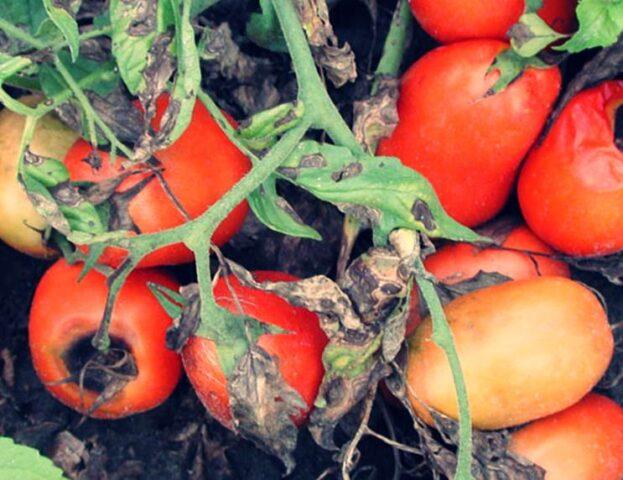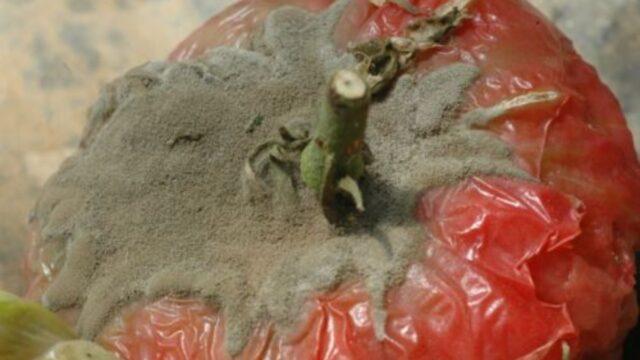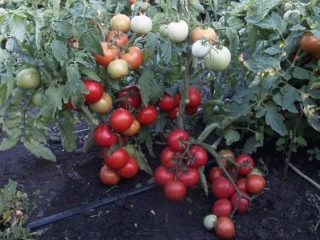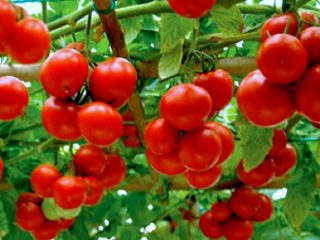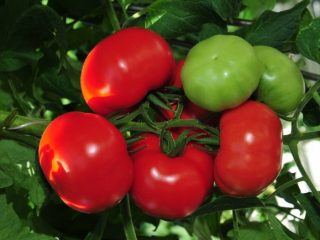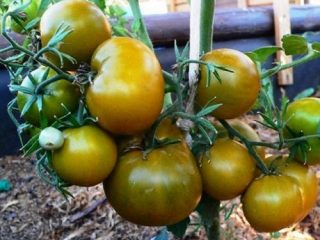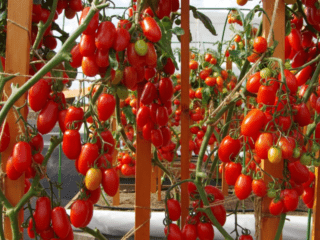Content
The Donkey Ears tomato is a popular variety in Russia and Europe with an unusual fruit shape. Before purchasing plant seeds, you should study its characteristics and care requirements.
History of selection
The Donkey Ears tomato is of Polish origin. The original name sounds like Oslim Uszy, in English the variety is called Donkey Ears.
On sale, seeds can often be found with the designation F1, which indicates that the tomato belongs to the group of hybrids. Information about parent varieties is not available.
Description of the tomato variety Donkey Ears
Tomato Donkey Ears F1 is an indeterminate type hybrid, reaching an average of 1.5-1.7 m above ground level. It has strong, thick stems and plates of rich green color. The budding of the clusters occurs after 2-3 leaves, 4-6 fruits are formed in each inflorescence, and the ovaries are formed throughout the season. The variety is mid-season, ripening takes on average 110 days from the moment of germination.The tomato needs to be formed - it is usually carried out in 2-3 stems, and the excess stepsons are promptly removed.
The photo of Donkey Ears tomatoes shows that they are very elongated in length, the main part is plum-shaped, and the top is pointed. The sides of the fruit are slightly flattened. The length is usually about 12 cm, the average weight is 200 g, although some tomatoes can reach 300 g. The skin of the fruit is thin, the color depends on the lighting - in the sun Donkey ears take on a bright crimson hue, in the shade they remain pink, there are also golden varieties . The tomato pulp is tender, sweetish, slightly grainy when cut, with moderate juiciness. The seed chambers are small and do not take up much space.
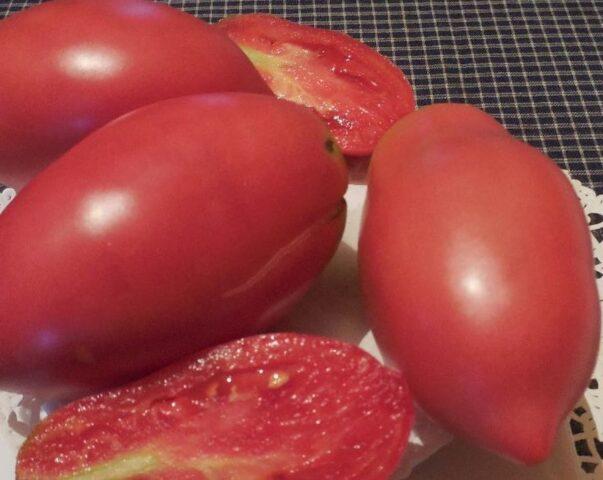
The taste of the Donkey Ears variety is reminiscent of Ox Heart
The variety can be grown both in a greenhouse and in the open air. Photos and reviews of tomato yields Donkey ears crimson note that in closed greenhouses the bushes develop better and bear fruit more abundantly. The plant is resistant to high temperatures, but reacts poorly to cold weather and rain. Excess moisture can cause fruits to crack and rot, so growing them outdoors in a temperate climate is associated with certain difficulties.
Characteristics of tomato Donkey ears
In addition to the general description, it is necessary to study the characteristics and reviews of the Donkey Ear tomato before planting the variety on the site. This will give you an idea of the size of the potential harvest and the suitability of the tomatoes for storage.
Tomato yield Donkey ears
The yield indicators of the Donkey Ears variety are not too high. From 1 m2 plantings, you can get an average of 5 kg of ripe fruits. At the same time, it is important to pick the tomatoes immediately after ripening or even a little earlier, so that they finally ripen in room conditions.
Resistance to diseases and pests
Donkey ears do not have significant immunity to typical tomato diseases. The variety is affected by Alternaria and late blight, and may suffer from garden pests. When growing in a greenhouse and in open ground, it is important to carry out regular preventive treatments of the bushes.
Methods of use
Donkey ears are stored for only 2-3 weeks after ripening, they quickly crack and are not suitable for transportation. Most often, the variety is used in salads, for preparing snacks and slices, and for obtaining fresh juice.
Ripe tomatoes are not used in canning, since the thin shell most often bursts. But for pickling, you can use slightly unripe tomatoes of mixed pink and green color. They hold their shape well and are quite dense.
Advantages and disadvantages of tomato Donkey ears
The description of the tomato variety Donkey Ears Crimson makes it clear that the hybrid has both advantages and weaknesses. Before planting bushes on the site, you need to thoroughly study the plant.
Pros: · beautiful appearance of tomatoes; · good taste; · good yield; · Suitable for growing in greenhouses and in the ground; · tolerates high temperatures well. | Minuses: · low transportability; · fruits are prone to cracking; · ripe tomatoes are not suitable for canning; · Tomato reacts sensitively to cold weather. |
It is best to grow the Donkey Ears tomato in the southern regions, where summers are usually hot and dry.In temperate climates, it is recommended to plant the variety in greenhouses and pay increased attention to it during the growing season.
Features of cultivation
Tomato Donkey ears pink has standard requirements for planting and care. Tomatoes are usually grown through seedlings; the step-by-step algorithm looks like this:
- At the end of March, tomato seeds are disinfected in a solution of potassium permanganate.
- A shallow wide box is filled with a moist nutrient substrate made from garden soil, compost and sand.
- Sow the seeds to a depth of about 1.5 cm and sprinkle dry soil on top.
- Cover the container with film and put it in a warm but shaded place.
- After about a week, when shoots appear, open the box again and move it to a sunny windowsill.
Over the next 1-1.5 months, the seedlings are regularly watered, and at the stage of two true leaves, they are planted in individual peat cups. Plants can be transferred to the greenhouse around the end of April, and to the outdoor garden no earlier than mid-May, after frosts have passed.
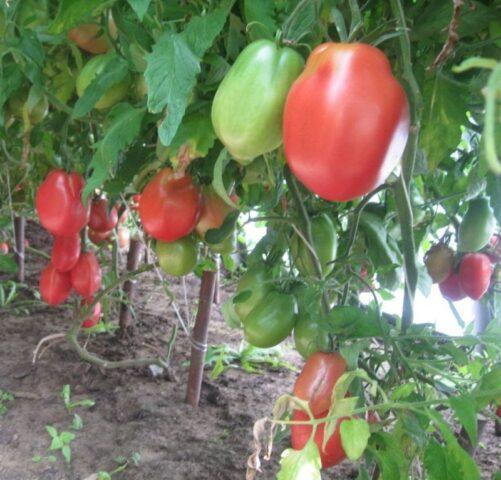
It is recommended to place 5-6 tomato bushes per 1 m2
Caring for tomato bushes is quite simple and consists of several procedures:
- Watering. For good development and formation of ovaries, a tomato needs moisture, however, when the soil becomes waterlogged, donkey ears begin to crack and rot. You need to water the bushes as needed as the top layer of soil dries.
- Fertilizer application. Plants are fertilized three times a season at intervals of two weeks. It is recommended to use special complex mixtures Kristallon tomato or Kemira Plus. The variety also responds positively to the addition of wood ash and compost.
- Stepsonning and garter.The tomato needs to be propagated into 2-3 shoots, removing excess stems when they reach 5-7 cm. A support or trellis is installed next to the bushes.
After the next addition of moisture, the soil at the roots of the plant must be loosened so that a hard crust does not appear on its surface.
Pest and disease control
Photos and reviews about the donkey ears gold, pink and crimson tomato show that the variety is especially susceptible to several diseases:
- late blight - a whitish coating appears on the lower surface of the leaves, and brown spots form on the fruits;
To prevent late blight, tomato bushes are sprayed with copper preparations and garlic infusion
- Alternaria - dark marks grow on the plates of the plant, the tomato greens gradually die off;
To prevent Alternaria blight, tomatoes must be sprayed with Bordeaux mixture at the seedling stage.
- gray rot - the fungus affects bushes in open ground in rainy weather, round spots appear on the fruits, and then grayish mold develops.
For gray rot, donkey ears are sprayed with Barrier and Zaslon preparations
Of the pests for tomatoes on the site, the most dangerous are wireworms - the larvae of click beetles that damage the roots and stems of the plant. To protect against insects, it is necessary to carefully dig up the soil before planting a tomato, and also regularly treat the soil with Bazudin.
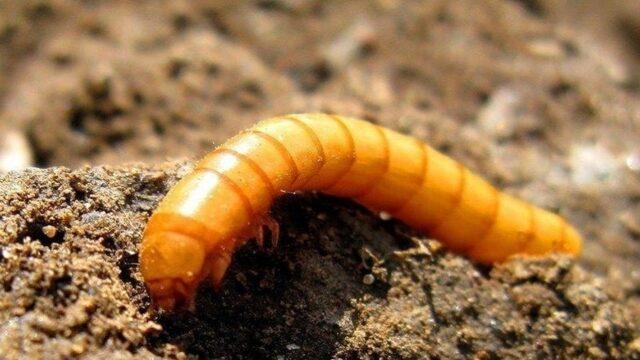
Liming the soil helps against wireworms
Conclusion
The Donkey Ears tomato is best suited for greenhouses or open ground in the south.The variety has numerous advantages, but it also has disadvantages - the fruits are not stored for long; they are used mainly for salads.
Reviews from gardeners about the Donkey Ears tomato
